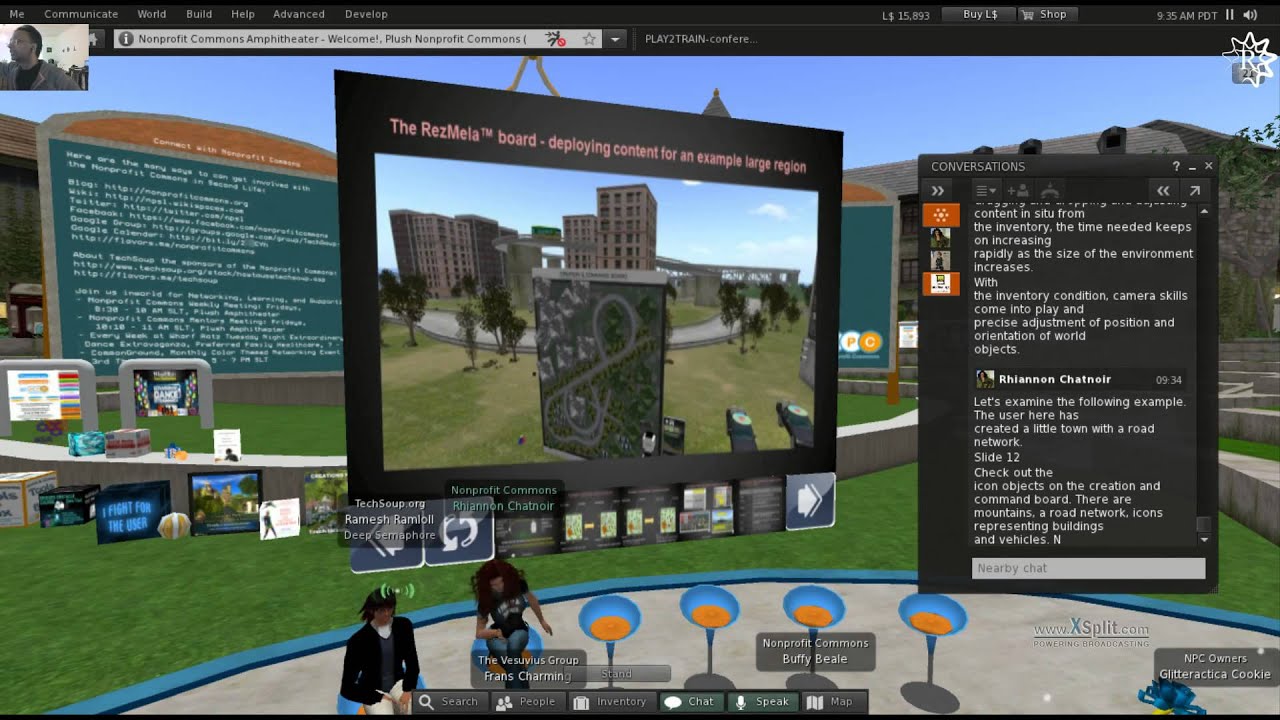Uncovering the Secrets of Forgotten Virtual Environments
The Rise and Fall of Second Life

virtual worlds have always held a certain allure, promising an escape from reality and a chance to connect with others in new and exciting ways. Second Life was one such virtual environment that captured the imagination of millions of users around the world during its heyday in the early 2000s. Launched by Linden Lab in 2003, Second Life allowed users to create their own avatars, explore virtual landscapes, and interact with others in a variety of social settings. It quickly gained a dedicated following and was heralded as the future of online social interaction.
However, as time went on, Second Life began to lose its appeal. The initial excitement of exploring a virtual world wore off, and users started to drift away in search of newer, more immersive experiences. The platform was also plagued by technical issues and an increasingly toxic online community, which drove even more users away. Slowly but surely, Second Life faded into obscurity, becoming a mere shadow of its former self.
Despite its decline, Second Life still has a small but dedicated community of users who continue to log in and explore the virtual world. Linden Lab has also made efforts to revitalize the platform, introducing new features and events to attract new users and retain existing ones. While it may never regain the widespread popularity it once enjoyed, Second Life remains a fascinating relic of a bygone era in online social interaction.
As we look back on the rise and fall of Second Life, it serves as a reminder of the fleeting nature of virtual environments. What may capture our imaginations today could easily be forgotten tomorrow as technology continues to evolve and new platforms emerge. In the ever-changing landscape of the internet, it’s important to appreciate these virtual worlds for what they are – temporary escapes that offer glimpses into the possibilities of the digital realm.
The Evolution of Virtual Reality Chatrooms

virtual reality has come a long way since its inception, offering immersive experiences that take us to another world without leaving the comfort of our own home. While modern VR technology continues to advance, there are some aspects of virtual environments that have been left behind and forgotten. One such example is virtual reality chatrooms, which were once a popular way for people to connect and socialize in a virtual space.
these early virtual reality chatrooms were a precursor to the social VR experiences we see today. Users could create avatars, interact with others in real-time, and even participate in virtual activities together. It was a novel way to meet new people and form friendships in a digital space. However, as VR technology progressed, these chatrooms became less popular, overshadowed by more sophisticated VR applications and games.
today, virtual reality chatrooms are not as prevalent as they once were. Many modern VR platforms focus more on gaming and entertainment rather than social interaction. However, there is still a niche community of users who enjoy the simplicity and nostalgia of virtual reality chatrooms. Some platforms, like VRChat, have gained popularity for their focus on social interaction and user-generated content.
the evolution of virtual reality chatrooms highlights the shifting priorities in the VR industry. While early adopters were drawn to the social aspect of VR, the mainstream appeal of gaming and entertainment has taken center stage. However, the concept of virtual reality chatrooms is not completely obsolete. As VR technology continues to evolve, we may see a resurgence of interest in social VR experiences and a revival of virtual reality chatrooms.
it’s fascinating to look back on the early days of virtual reality chatrooms and see how far we’ve come. While these environments may be forgotten by some, they hold a special place in the history of VR as a pioneering way for people to connect in a virtual world. As we move forward with VR technology, it will be interesting to see how social interactions in virtual environments continue to evolve and shape the future of virtual reality experiences.
The Legacy of Myspace and Virtual Social Networks

once upon a time during the early days of the internet, there existed a virtual world that many considered their digital home – Myspace. It was a platform where users could customize their profiles with glittering graphics, autoplaying music, and personalized layouts. For many of us, Myspace was our first introduction to social networking online, connecting with friends, sharing our thoughts, and discovering new music. Myspace was a pioneer in the realm of social media, carving out a space for self-expression and creativity that would later be adopted and evolved by platforms like Facebook, Twitter, and Instagram.
however, as time passed, the popularity of Myspace began to wane. New social networking sites emerged, offering sleeker interfaces, better user experiences, and more sophisticated features. Users gradually migrated to these new platforms, leaving Myspace behind. The rise of Facebook, in particular, dealt a significant blow to Myspace, attracting a larger user base and offering a simpler, more streamlined social networking experience. The advent of smartphones and mobile apps further accelerated Myspace’s decline, as users sought out platforms that were optimized for on-the-go usage.
despite its fall from grace, Myspace left an indelible mark on the internet and the way we interact online. It was a breeding ground for creativity and self-expression, allowing users to curate their online personas in ways that were unprecedented at the time. Myspace also played a crucial role in the music industry, providing a platform for independent artists to share their music and gain a following. Many musicians and bands got their start on Myspace, leveraging the platform’s reach to build a fan base and launch their careers.
today, Myspace is a relic of the past, a reminder of a bygone era of the internet. While the platform still exists in some form, it no longer holds the same cultural relevance or user base that it once did. Yet, for those of us who were part of the Myspace generation, it remains a nostalgic memory, a virtual environment where we first dipped our toes into the waters of social networking. Myspace may have faded into obscurity, but its legacy lives on in the way we connect and communicate online today.
Exploring the Abandoned Worlds of Early Online Games

have you ever wondered about the virtual worlds that have been lost to time? The early days of online gaming brought to life dynamic and imaginative environments that, for many, hold a special place in their memories. From the pixelated landscapes of text-based MUDs to the early graphical worlds of games like Ultima Online and EverQuest, these virtual spaces were the birthplace of countless adventures and friendships.
as technology has advanced, many of these early online games have been left behind, their servers shut down and their worlds lost to the digital ether. But for some dedicated preservationists and historians, these abandoned virtual environments hold a wealth of nostalgia and historical significance. through emulation, reverse engineering, and archival efforts, these intrepid explorers are working to keep these digital relics alive for future generations to enjoy and study.
one such project is the Internet Archive’s Software Library: MS-DOS Games. This collection features hundreds of classic MS-DOS games that can be played directly in your web browser, allowing you to experience the magic of early PC gaming right from your modern device. From iconic titles like The Oregon Trail and Prince of Persia to lesser-known gems, this collection is a treasure trove of gaming history.
another example is the effort to preserve the world of the original EverQuest. Through projects like Project 1999, players can experience a re-creation of the classic MMORPG as it existed in its early days. By painstakingly re-creating the game’s original mechanics and world state, Project 1999 offers a nostalgia-filled trip back to Norrath as it was in 1999.
these projects are not just about preserving digital curiosities; they are about honoring the legacy of these virtual worlds and the communities that formed within them. By keeping these abandoned environments alive, we can ensure that the pioneering spirit and creativity of early online gaming are never forgotten. Whether you’re a seasoned gamer who cut their teeth in the early days of online play or a newcomer curious about the roots of modern gaming, exploring these forgotten virtual environments can offer a fascinating glimpse into the evolution of digital entertainment.

